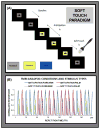Hyperactivation to pleasant interoceptive stimuli characterizes the transition to stimulant addiction
- PMID: 26228575
- PMCID: PMC4537790
- DOI: 10.1016/j.drugalcdep.2015.07.009
Hyperactivation to pleasant interoceptive stimuli characterizes the transition to stimulant addiction
Abstract
Aims: Altered interoception, how the brain processes afferents from the body, may contribute to the urge to take drugs, and subsequently, the development of addiction. Although chronic stimulant dependent individuals exhibit attenuated brain responses to pleasant interoceptive stimuli, it is unclear whether this deficit exists early-on in the process of transition to stimulant addiction.
Methods: To this end, we compared problem stimulant users (PSU; n=18), desisted stimulant users (DSU; n=15), and stimulant naïve comparison subjects (CTL; n=15) during functional magnetic resonance imaging (fMRI) while they anticipated and experienced pleasant soft touch (slow brushstroke to the palm and forearm).
Results: Groups did not differ in behavioral performance or visual analog scale ratings of soft touch stimuli. fMRI results indicated that PSU exhibited greater right anterior insula, left inferior frontal gyrus, and right superior frontal gyrus activation than DSU and CTL during the anticipation and experience of soft touch. Moreover, during the experience of soft touch, PSU demonstrated higher bilateral precentral gyrus/middle insula and right posterior temporal gyrus activation than DSU and CTL.
Conclusions: In contrast to chronic stimulant dependence, individuals who have recently developed stimulant use disorders show exaggerated neural processing of pleasant interoceptive stimuli. Thus, increased processing of body-relevant information signaling pleasant touch in those individuals who develop problem use may be a predictive interoceptive biomarker. However, future investigations will need to determine whether the combination of probing pleasant interoception using neuroimaging is sufficiently sensitive and specific to help identify individuals at high risk for future problem use.
Keywords: Amphetamine; Cocaine; Functional magnetic resonance imaging; Interoception; Reward.
Copyright © 2015 Elsevier Ireland Ltd. All rights reserved.
Conflict of interest statement
J. L. Stewart: Conflict of interest: none.
A. C. May: Conflict of interest: none.
S. F. Tapert: Conflict of interest: none.
M. P. Paulus: Conflict of interest: none.
Figures


References
-
- American Psychiatric Association. Diagnostic Criteria From DSM-IV-TR. American Psychiatric Association; Washington, D.C: 2000.
-
- Barratt ES, Patton JH. Impulsivity: cognitive, behavioral, and psychophysiological correlates. In: Zuckerman M, editor. Biological Bases of Sensation Seeking, Impulsivity, and Anxiety. Erlbaum; Hillsdale, NJ: 1983. pp. 77–116.
-
- Beck AT, Steer RA, Brown GK. Manual for Beck Depression Inventory-II. Psychological Corporation; San Antonio, TX: 1996.
Publication types
MeSH terms
Substances
Grants and funding
LinkOut - more resources
Full Text Sources
Other Literature Sources
Medical

